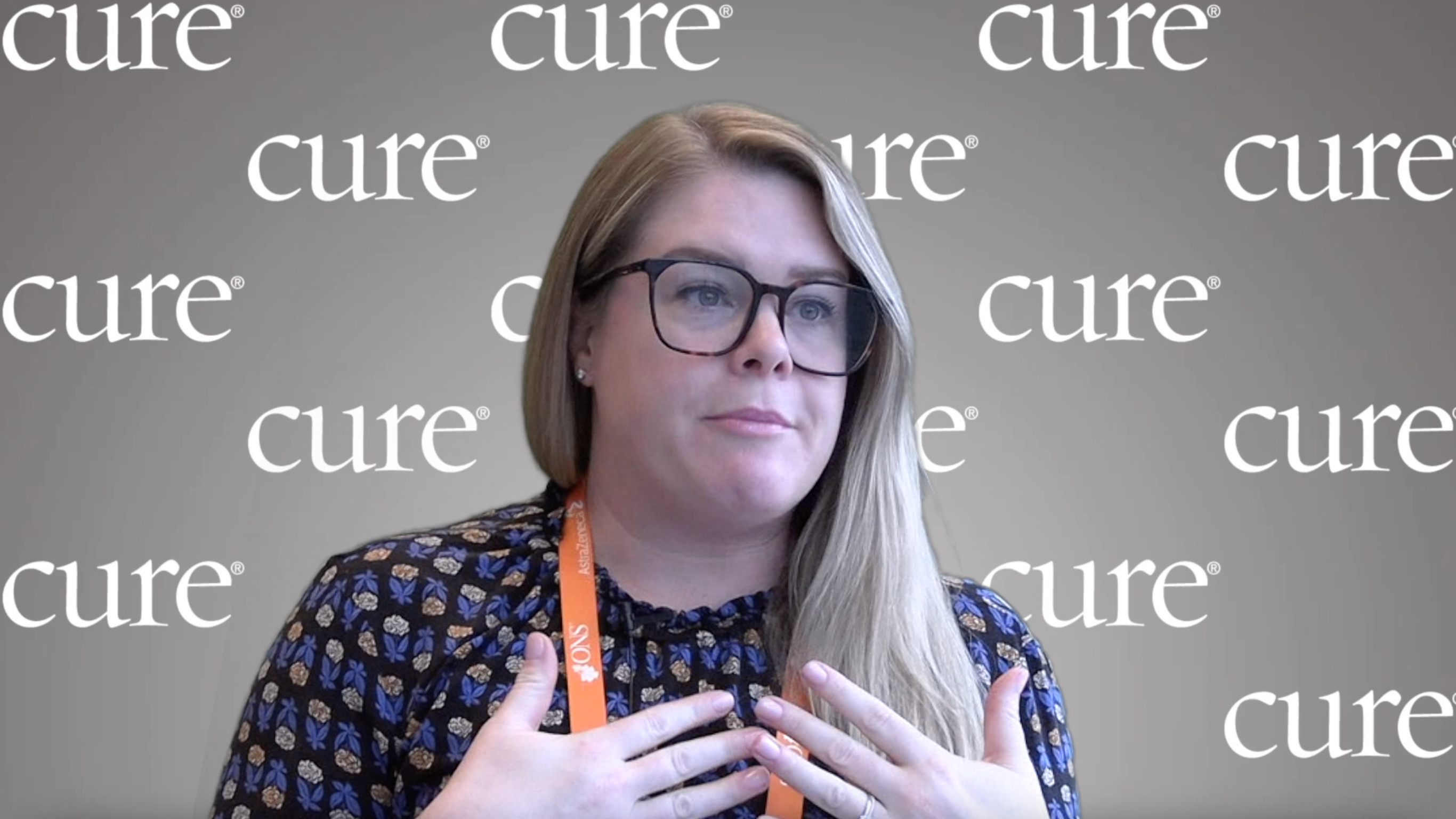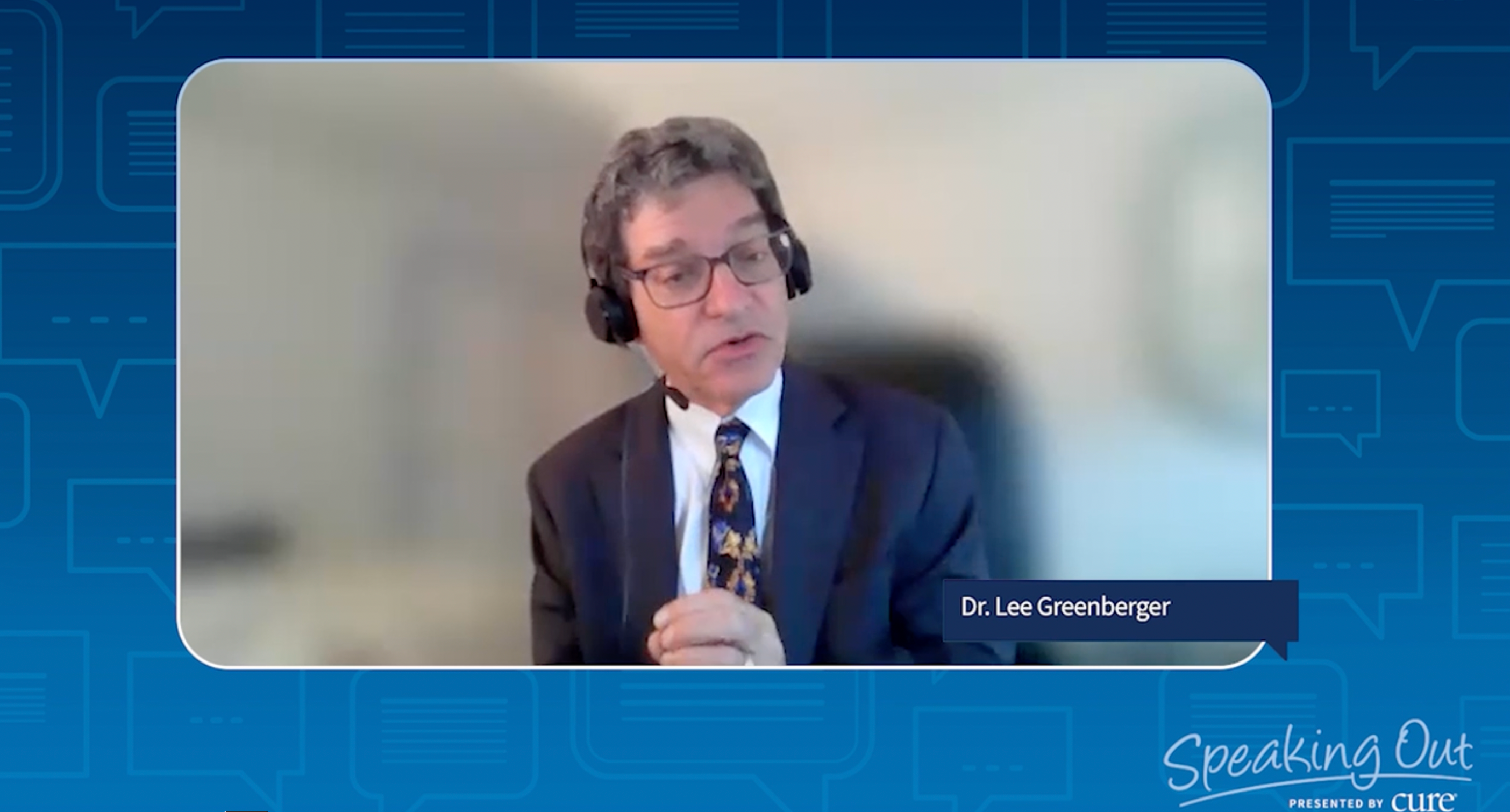Video
Clinical Trials in Cutaneous T-Cell Lymphoma
Author(s):
Kristie L. Kahl: To start, can you talk about the research landscape right now in cutaneous T-cell lymphoma?
Dr. Steven M. Horwitz: There's a lot going on, despite it being a rare disease. And I think most of the research is really aimed at understanding better therapies or developing better therapies and understanding how to better match them to patients most likely to benefit, not match them with patients least likely to benefit. And I think they really take on two broad groups right now.
As we've developed a better understanding of the underlying mechanism of the lymphoma, sort of what's going wrong in the cells – that they grow abnormally, don't die normally and accumulate. Some of those mechanisms are things that are targetable with what we call small molecule or targeted therapies where we can understand an abnormality in the cell. And then, rather than giving a strong chemotherapy, which would treat any dividing cells, we try to target medicine, specifically the abnormalities or the things that make that a cancer cell. And there's a group of drugs targeting different pathways in that category that are being explored.
The other really big areas are immune therapy, so ways of harnessing or targeting the immune system to fight the lymphoma cells. And that really ranges from antibody treatments where we give an antibody. It's a protein that circulates that can stick to things, like a cancer cell or like a virus, and then harness the immune system to fight that. So, there's some antibodies in the clinic and some others in development that help the immune system fight lymphomas. There's other therapies, called checkpoint inhibitors, or drugs that unblock the immune system so your normal immune system can fight the cancer cells. And then there's cellular therapy, where you're re-engineering cells specifically to fight the lymphoma. All those strategies are being explored, with multiple drugs and compounds currently.
Kristie L. Kahl: Through research, what do we know about the disease’s biology?
Dr. Steven M. Horwitz: I think as we learn more about the individual abnormalities in the cell, we know that there's certain pathways that are turned on so a normal T cell should grow when it's supposed to grow. You get an infection, you should get an expansion of those T cells, they should fight off the infection and when their job is done, they should reduce back to a very small number. And one of the things with cancer cells is some of those mechanisms to grow and divide are turned on all the time, or too often inappropriately accumulate these. So we learned some of the underlying molecular abnormalities. These pathways have different names – PI3 kinase or JAK. And then what you can do is you can engineer molecules to specifically block messages in those pathways, and shut that ongoing division off, let the cells reduce, let the body take care of some of those. I
The other thing we're learning is more about some of the ways that cancer cells in general, including cutaneous lymphomas, can hide or block themselves from the immune system. So there's molecules that they can express on their surface to prevent normal T cells from attacking them or killing them, not letting the cancer cells grow in the body. There's these molecules called CD47, which block another arm of the immune system, something called macrophages. So we’re learning some of those things, that some of those mechanisms of the cells are using to protect themselves from the immune system. Primarily laboratory scientists can engineer molecules to block that or hide that, or undo that blocking of the immune system, letting the normal immune system try to take care of the cancer cells. And then I think what we learn more and more in terms of treatments that really work well. Sometimes you need combinations of these strategies to do the best. And that's really done through sequential clinical trials, understanding of medicine, where it works, where it doesn't, how safe it is, then building on that.
Kristie L. Kahl: What are some of the current challenges that we still see with this disease that warrants further research?
Dr. Steven M. Horwitz: The big challenge is most of our therapies to date. When they work, they work for a period of time, and then they stop working. And I think what we learn is that through a lot of our traditional medicines, they can kill the majority of the cells, they can get the lymphoma better, but some cells are resistant, or they learn resistance, and then they break through. So we haven't typically had medicines that could work forever. In many of the medicines we have for cutaneous T-cell lymphomas, you have to give them on an ongoing basis, meaning you can't treat for three months and then be clear for four years and then treat again. You need to keep some consistent pressure on the lymphoma cells. So I think those have been some of the challenges. You know, the way we address that is finding new better medicines or new additional medicines, or when it works well, understanding why a lymphoma can escape or break through from a certain treatment, and then figure out how to address that vulnerability or add to it to make that got more potent and longer lasting treatment.
Kristie L. Kahl: Can you discuss some of the phase 3 trials that are currently in the pipeline that we should be on the lookout for?
Dr. Steven M. Horwitz: For cutaneous T-cell lymphoma, we've just had a couple of phase 2 trials. For phase 3 trials, these big randomized studies where a new therapy is compared against the standard, we've had a couple leading to approval of an antibody to target CCR4 or mogamulizumab, or Poteligeo. And then we've had a big phase 3 study of brentuximab vedotin. So those were our two last big approvals.
Most of the other new molecules that we're looking at are earlier on. There's an antibody on the surface of a cancer cell called KIR3DL2, that looks like it's particularly good in some cutaneous lymphomas like Sezary syndrome. So that's being looked at in a randomized study. And then a lot of these other (drugs) that are really quite early, where we're looking at just basic activity, more like things like phase 2 studies where we're trying to quantify how well the drug works, and then think about what are the next steps.
Kristie L. Kahl: What's on the horizon in cutaneous T-cell lymphoma?
Dr. Steven M. Horwitz: The next wave of clinical trials we're going to see are probably through these immune-based therapies. The things that are coming up that may be advances, and again, this is still investigational, but some of these CD47 blocking strategies, where we're figuring out ways to unlock the immune system against the lymphoma, some of those are early on in the clinic showing activity. There's a number of drugs that target that pathway that are being investigated, and then some ways of combining those therapies with other immune-stimulating therapy. We're going to see those studies, and I have some optimism that those are going to provide good responses.
With cellular therapy, you may hear about (chimeric antigen receptor (CAR) T cells, which has fundamentally changed how some of our patients with aggressive lymphomas and leukemias do. We are just starting to come into the clinic in T-cell lymphomas. Most of those initial strategies used T cells. And it's a little more complicated to use good T cells to fight bad T cells. There's a little more risk. There's a little more complication there. And then a generation of those that don't use a person's own T cells, different strategies, either another person’s cells, non–T-cell therapies. I think those are going to be tested in early-phase clinical trials now into the next year or two. I have some optimism that that we may find some areas where those are quite effective.
Kristie L. Kahl: What do patients with this disease have to look forward to?
Dr. Steven M. Horwitz: It’s a hard disease. It's a disease that's a cancer and you have all the fear and risk of a cancer and it's on the outside of your body. So it's also not just a cancer but something you and others see every day. I think it's really hard. So that's tough.
I think there's a lot of energy looking at new therapies, and they're really focused on more potent and safer therapies. So, I think the optimism would be that there's a lot of people working on this. There are some real strategies there that may change things for the future. We have to work with each other and our patients to do the hard work of understanding those treatments, understanding how best and safely to use them. But there is sort of a broad, really international concerted effort to attack these diseases. So, I think that's a realistic hopeful message for patients.















